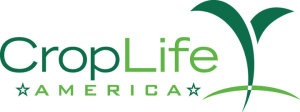Study: Duplicative Crop Protection Regulations Would Cost Taxpayers $474 Million
A new report commissioned by CropLife America (CLA) estimates that the duplicative registration review process for crop protection products could cost taxpayers an additional $474 million over the next 10 years if the existing system of endangered species consultations continue.
CLA President and CEO Jay Vroom said the report confirms the current “broken regulatory system for crop protection products, providing no additional benefits to wildlife, farmers or taxpayers.”
Amendments to the Federal Insecticide, Fungicide and Rodenticide Act (FIFRA) in 1996 and 2007 established a 15-year cycle of pesticide registration review to ensure that all registered products meet current regulatory requirements; the first cycle must be completed by 2022. All EPA pesticide registration actions are further subject to Section 7 of the Endangered Species Act (ESA), which requires that EPA consult with the Fish and Wildlife Service (FWS) and the National Marine Fisheries Service (NMFS) if the pesticide use “may affect” endangered species.
These agencies conduct their own independent risk analysis – despite the fact that EPA already rigorously reviews a product’s potential impacts on the environment in accordance with FIFRA, including possible effects on threatened or endangered species.
The report documents the review process as currently conducted through the individual agencies. It includes a review of the budgetary capacity of the agencies and a breakdown of estimated costs over time. The report found:
- Under the current consultation process, where NMFS and FWS conduct their own assessments in addition to EPA, completing the currently scheduled review of 744 pesticide registration dockets by fiscal year 2023 would require an additional taxpayer expense of $474 million above current budgetary levels.
- Completion of these dockets would require a 13-fold increase in current budget and a 25-fold increase over current staffing levels at NMFS.
- Completion of these dockets would require a 17-fold increase over current budget and a 71-fold increase over current staffing levels at FWS.
“We look forward to working in a collaborative dialogue with EPA, USDA and the Services to find a solution that continues to protect threatened and endangered wildlife, while using government resources more efficiently,” Vroom said. “It is unrealistic to expect that our government will spend hundreds of millions of dollars more to expand regulatory capacity at FWS and NMFS, only to affect regulatory redundancy.”
According to CLA, the findings reaffirm the recommendations of the April 2013 report “Assessing Risks to Endangered and Threatened Species from Pesticides” by the National Academy of Sciences (NAS) Committee on Ecological Risk Assessment under FIFRA and ESA. The NAS report found that federal regulatory agencies should use a common approach to evaluate risks. The committee determined that if FWS and NMFS could build on EPA’s analysis of whether a pesticide is likely to adversely affect a listed species rather than conduct a completely new analysis, the assessment would likely be more effective.
“Agreement among the agencies to date has been impeded by a lack of communication and coordination throughout the process,” CLA said. “Therefore, the Committee emphasized the need for coordination, which it views as necessary to ensure a complete and representative assessment of risk. Increased coordination would also help ensure that each agency’s technical needs are met.”
CLA said it engaged Summit Consulting to produce cost estimates for the operation of the pesticide registration review associated with ESA Section 7 consultations. Founded in 2003, Summit specializes in blending expert academic knowledge in economics and econometric methods with real-world experience in budget cost estimation to design and implement quantitative solutions for federal agencies and private-sector clients. Summit is led by Ph.D. economists and federal budget experts, including a former member of the Office of Management and Budget (OMB) Credit Crew, with significant and direct experience reviewing and approving model methodologies compliant with the Federal Credit Reform Act of 1990 (FCRA).
A full copy of the report is available at http://www.croplifeamerica.org/ESA-Cost-Analysis.
Source: CropLife America







